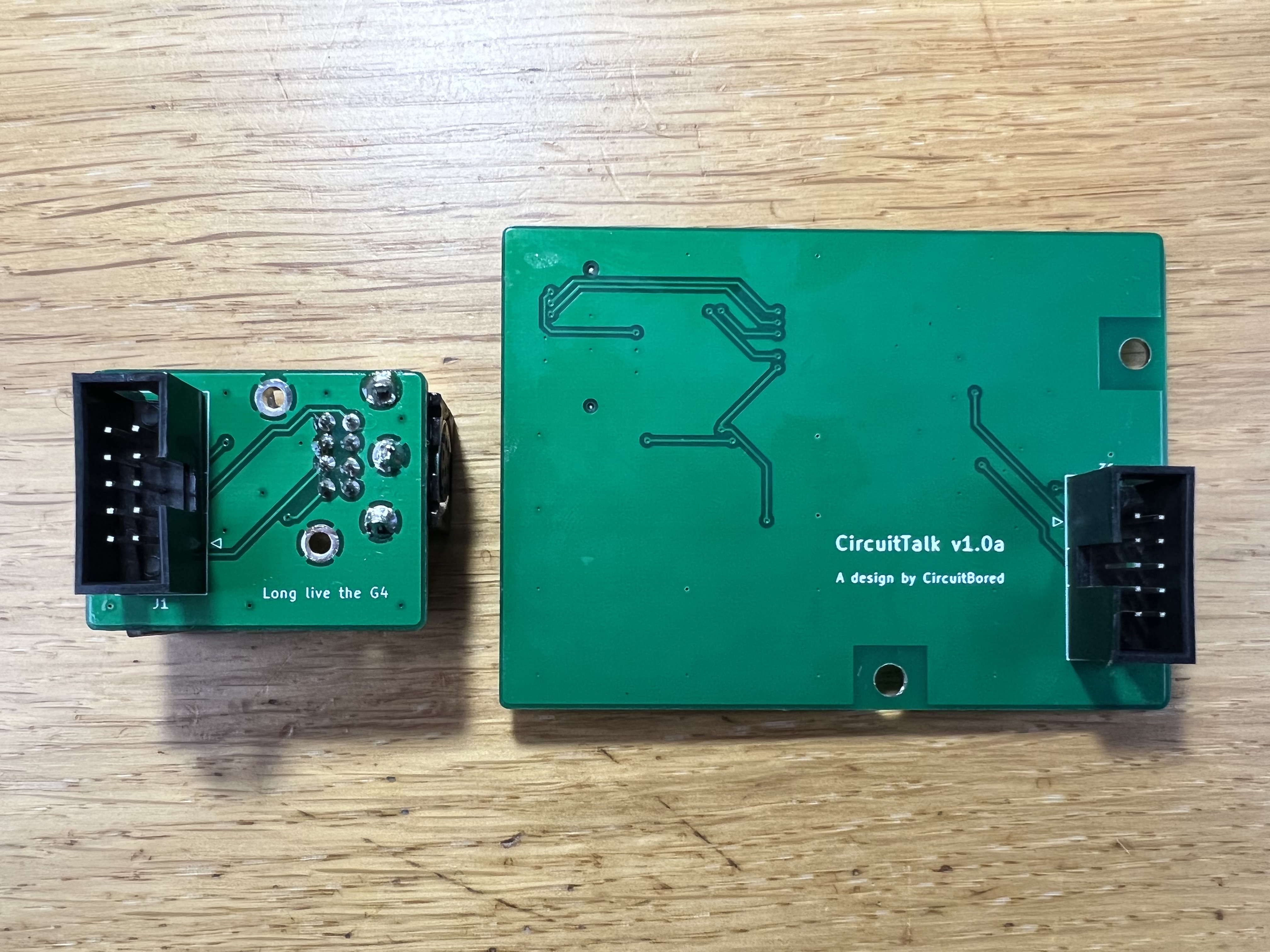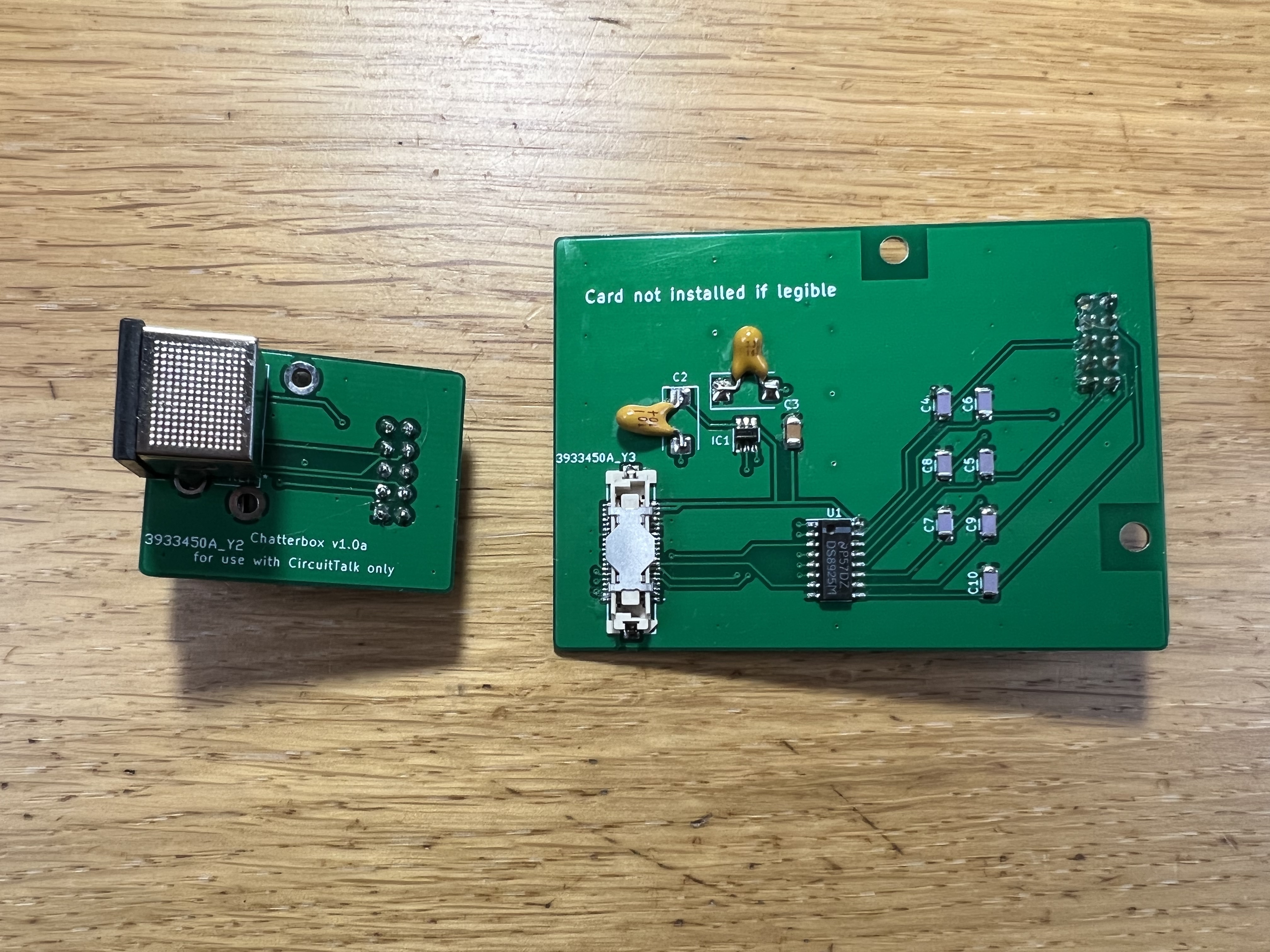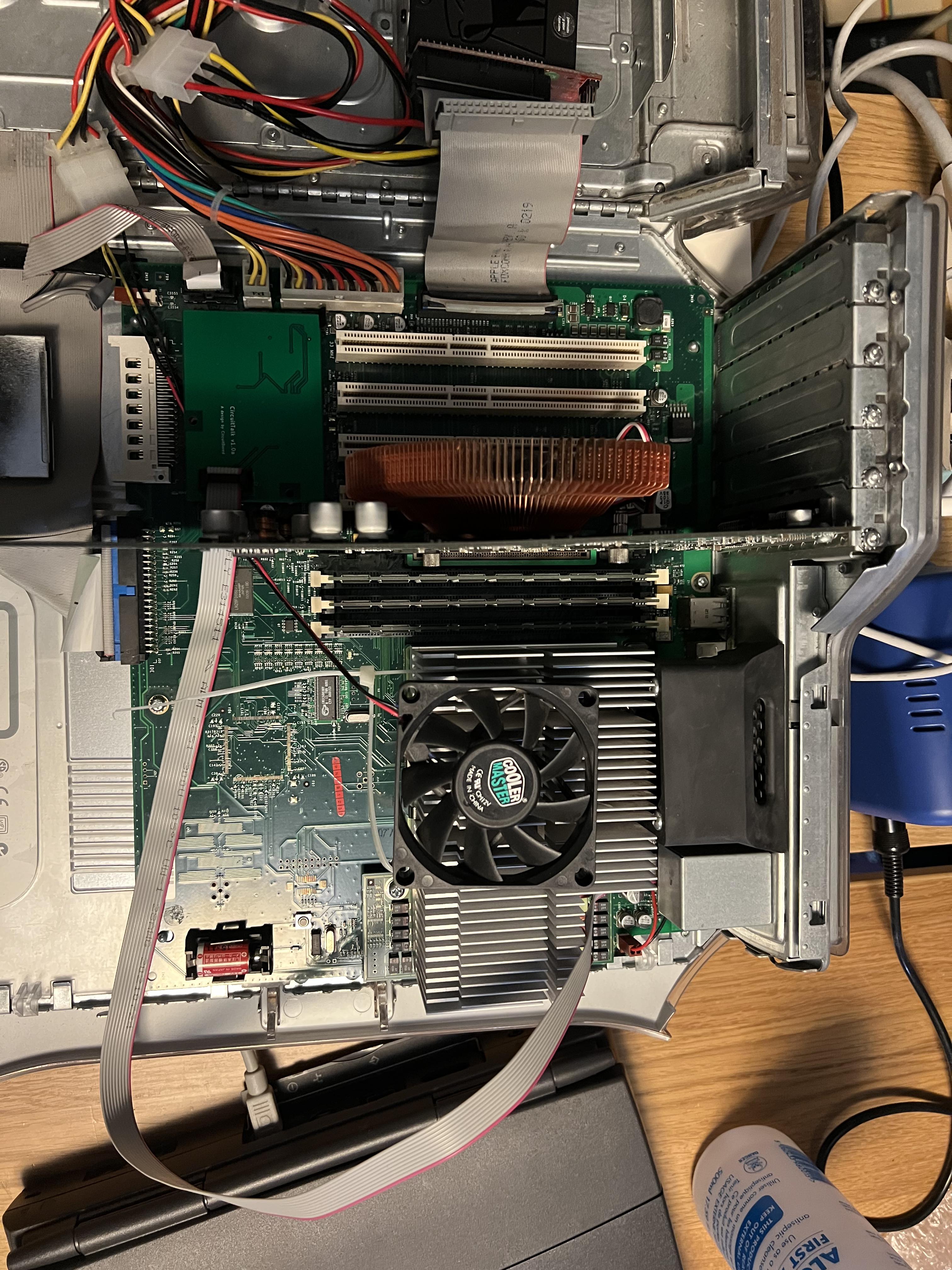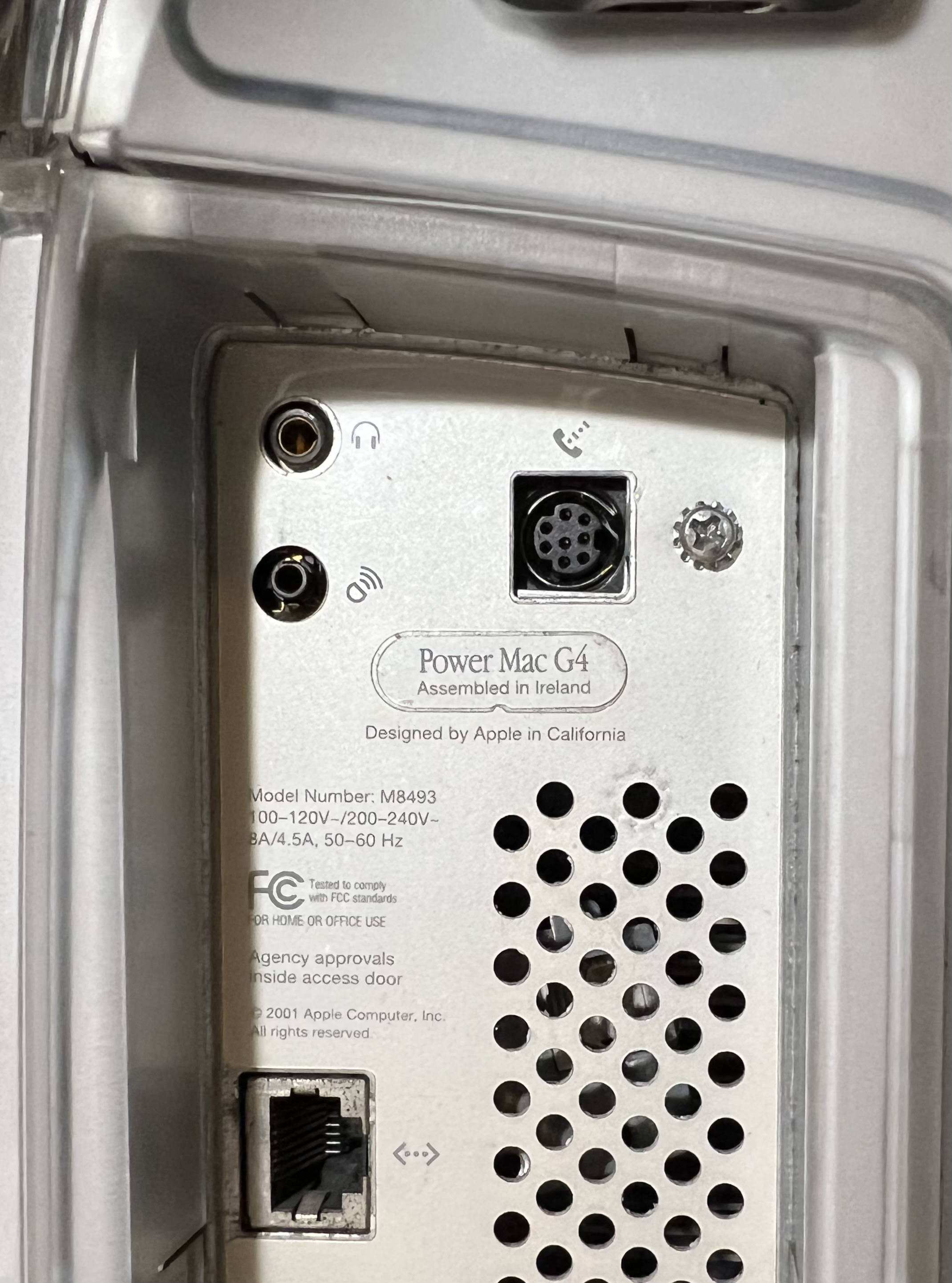CircuitBored
Well-known member
It is finally time to unveil a project that I have been working on for the last month or so. This is CircuitTalk, a recreation of the StealthSerial and GPort cards that were briefly available for the PowerMac G4 around twenty years ago.


What does it do?
This card replaces the modem card in PowerMac G4 computers and adds a serial (LocalTalk) port in its place. This enables you to use a PowerMac G4 computer on LocalTalk networks and even act as a LocalTalk -> Ethernet bridge (with one minor caveat, detailed below).


How was it designed?
I simply identified the components used on the original Gport and StealthSerial cards and used their datasheets to work backwards from there, slowly figuring out how everything was supposed to be connected up. My early proof-of-concepts were... quite a sight to behold.

Pure chaos here. I was able to get this thing to work but it broke just about every time I so much as breathed on it.


I soon grew tired of constantly resoldering the horrendously fine-pitched logic board connector so built a much more civilised proto-board version.
The PCB was designed by removing all the components from the original modem card and then putting it in a scanner. From there I used GIMP to pixel-measure the placement of the connector and the standoffs. I then used these measurements to design the PCB footprint in KiCad. I almost got it perfect. The card fits and can be screwed in place but one of the standoffs is ever so slightly misplaced. This will be fixed in the first publicly-available version.


How fast is it?
In my testing this card runs at around 25KB/s, right up against LocalTalk's theoretical maximum of approximately 28KB/s.
Which machines are compatible?
This card will work in any PowerMac G4 with an AGP slot: late Sawtooths, all Quicksilvers, and all Mirror Drive Door models. At the moment the breakout board only fits into Sawtooth and Quicksilver models but I am working hard on developing a new version that fits into a wider variety of models.
Which machines will be compatible?
The models listed above will all be compatible with the first public version of CircuitTalk.
The main board will fit in an iMac G4 but an entirely different daughterboard will need to be designed to prevent you from having a serial cable dangling out of the back of your computer. The iMac G4 will be the first machine to get CircuitTalk once the PowerMac version is finalised.
The Blue and White PowerMac G3 and the PCI PowerMac G4 use a different internal connector to the later G4s and the positioning is entirely different. There is also a rather large FireWire module in the way. CircuitTalk will need a completely new PCB before it will work! I also need to figure out the pinout of the internal modem connector for these machines as it seems as though it is entirely undocumented.
There is also scope to expand this project to PowerBook G4 and Mac Mini G4 if there is enough demand for it but, as with the G3 version, it will take a large investment of time and money on my part.
Do I need any special software to use this?
Yes. In Mac OS 9 the original GPort extension is required to operate this card and you must patch the LocalTalk Bridge control panel using a tool developed by Griffin in order to be able to do any network bridging. The vanilla version of LocalTalk Bridge will crash your machine if you try to use it. Both these bits of software are archived and will be readily available to all who purchase this gadget. This card also has drivers for Mac OS X.
How much will it cost?
The current target price is £40 (US$54, 48€ at the time of writing) but this may change slightly depending on component availability.
How long until it's ready?
The intial prototype PCBs have been tested and their issues exposed (I placed the mini-din connector upside down, oops!). The main board is 99% ready but the sub-board (nicknamed "Chatterbox") is going to require a significant redesign before I start selling them. At the moment I am expecting to have kits ready to sell by the end of next month, possibly a little earlier if I can find the time.
Do you want one?
This is a question to you, the reader. I am currently nearing the stage where I will be ready to sell these boards and would like to approximate the demand before I order the first batch of finalised PCBs. If you want one of these cards then please leave a comment below expressing your interest.


What does it do?
This card replaces the modem card in PowerMac G4 computers and adds a serial (LocalTalk) port in its place. This enables you to use a PowerMac G4 computer on LocalTalk networks and even act as a LocalTalk -> Ethernet bridge (with one minor caveat, detailed below).


How was it designed?
I simply identified the components used on the original Gport and StealthSerial cards and used their datasheets to work backwards from there, slowly figuring out how everything was supposed to be connected up. My early proof-of-concepts were... quite a sight to behold.

Pure chaos here. I was able to get this thing to work but it broke just about every time I so much as breathed on it.


I soon grew tired of constantly resoldering the horrendously fine-pitched logic board connector so built a much more civilised proto-board version.
The PCB was designed by removing all the components from the original modem card and then putting it in a scanner. From there I used GIMP to pixel-measure the placement of the connector and the standoffs. I then used these measurements to design the PCB footprint in KiCad. I almost got it perfect. The card fits and can be screwed in place but one of the standoffs is ever so slightly misplaced. This will be fixed in the first publicly-available version.


How fast is it?
In my testing this card runs at around 25KB/s, right up against LocalTalk's theoretical maximum of approximately 28KB/s.
Which machines are compatible?
This card will work in any PowerMac G4 with an AGP slot: late Sawtooths, all Quicksilvers, and all Mirror Drive Door models. At the moment the breakout board only fits into Sawtooth and Quicksilver models but I am working hard on developing a new version that fits into a wider variety of models.
Which machines will be compatible?
The models listed above will all be compatible with the first public version of CircuitTalk.
The main board will fit in an iMac G4 but an entirely different daughterboard will need to be designed to prevent you from having a serial cable dangling out of the back of your computer. The iMac G4 will be the first machine to get CircuitTalk once the PowerMac version is finalised.
The Blue and White PowerMac G3 and the PCI PowerMac G4 use a different internal connector to the later G4s and the positioning is entirely different. There is also a rather large FireWire module in the way. CircuitTalk will need a completely new PCB before it will work! I also need to figure out the pinout of the internal modem connector for these machines as it seems as though it is entirely undocumented.
There is also scope to expand this project to PowerBook G4 and Mac Mini G4 if there is enough demand for it but, as with the G3 version, it will take a large investment of time and money on my part.
Do I need any special software to use this?
Yes. In Mac OS 9 the original GPort extension is required to operate this card and you must patch the LocalTalk Bridge control panel using a tool developed by Griffin in order to be able to do any network bridging. The vanilla version of LocalTalk Bridge will crash your machine if you try to use it. Both these bits of software are archived and will be readily available to all who purchase this gadget. This card also has drivers for Mac OS X.
How much will it cost?
The current target price is £40 (US$54, 48€ at the time of writing) but this may change slightly depending on component availability.
How long until it's ready?
The intial prototype PCBs have been tested and their issues exposed (I placed the mini-din connector upside down, oops!). The main board is 99% ready but the sub-board (nicknamed "Chatterbox") is going to require a significant redesign before I start selling them. At the moment I am expecting to have kits ready to sell by the end of next month, possibly a little earlier if I can find the time.
Do you want one?
This is a question to you, the reader. I am currently nearing the stage where I will be ready to sell these boards and would like to approximate the demand before I order the first batch of finalised PCBs. If you want one of these cards then please leave a comment below expressing your interest.
